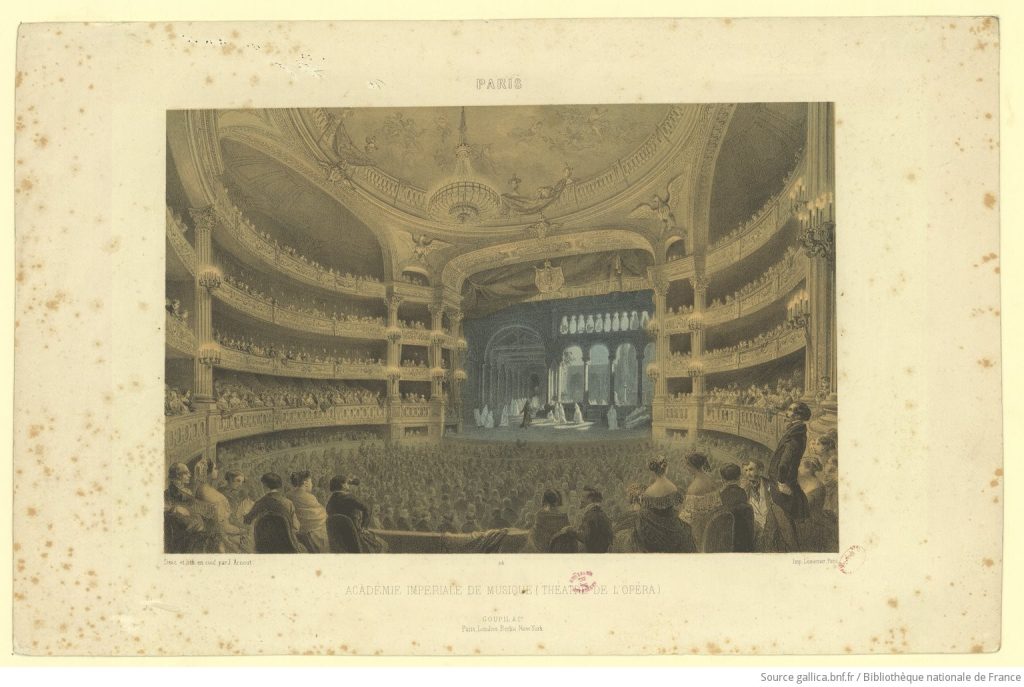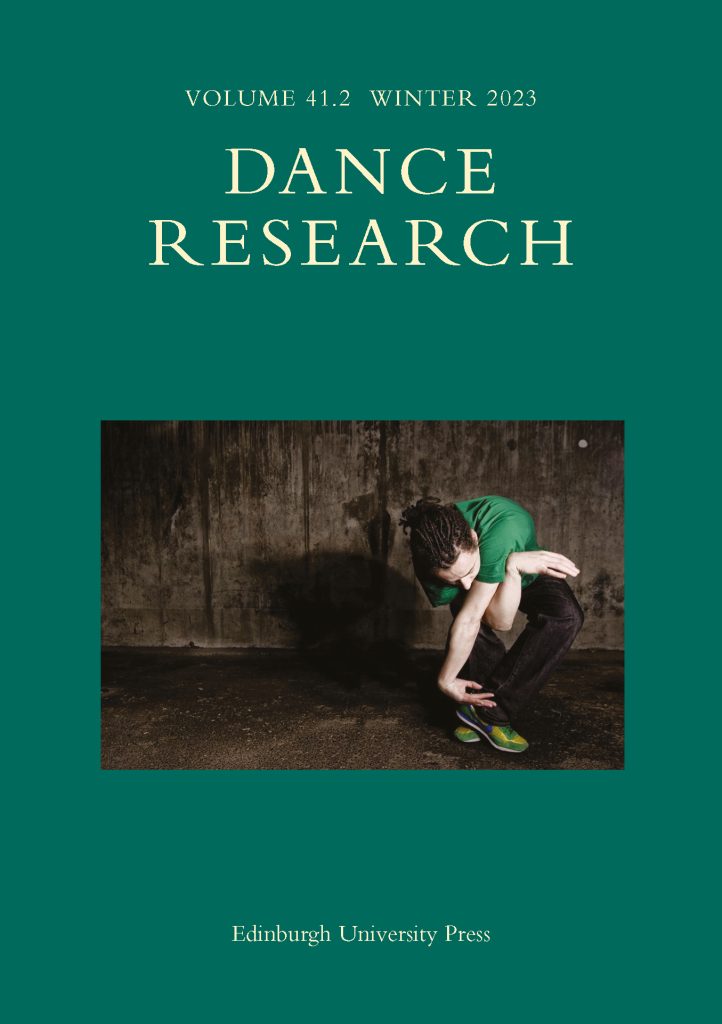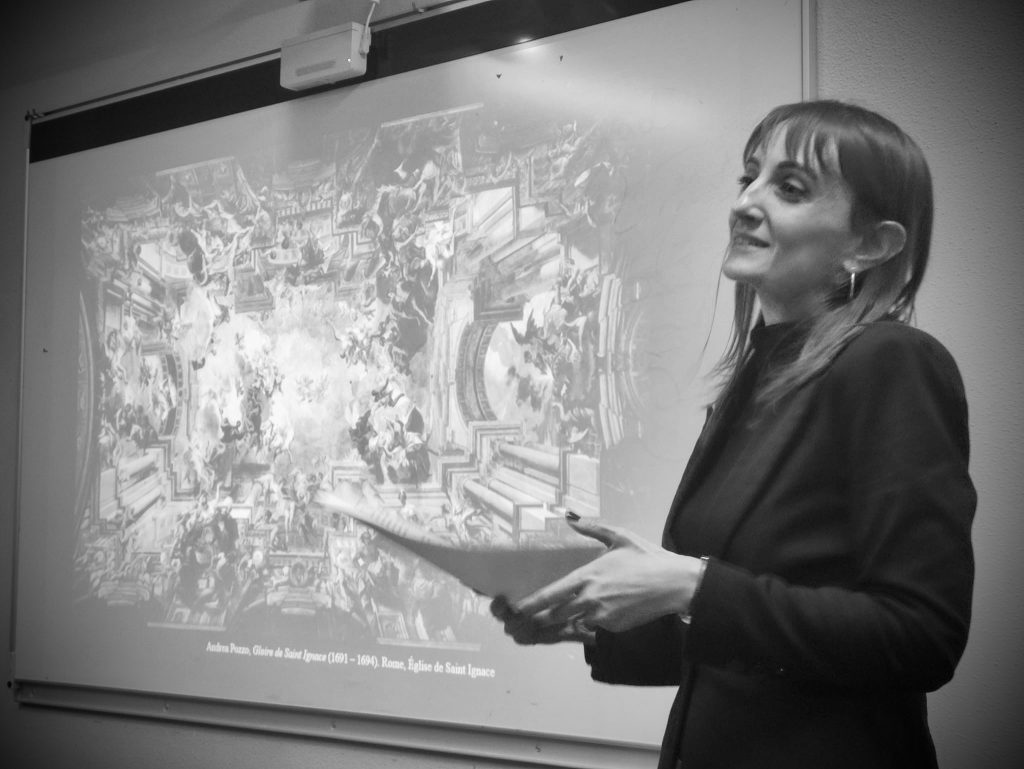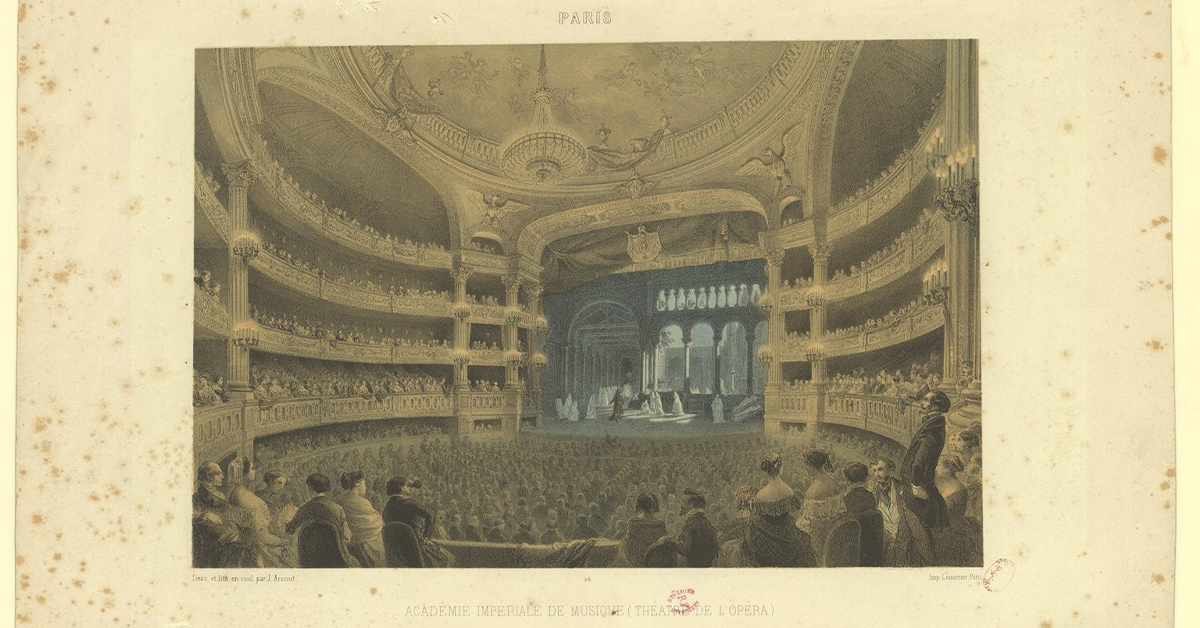
by Elisa Cazzato
Those who have familiarity with the work backstage in a theatre or dance production will know that this is where quarrels and logistic tensions often occur. In my research at the Paris Opéra, I take a look behind the scenes of early nineteenth-century French operatic production to understand how the management of the creative team worked, with specific attention to the stage setting.
My forthcoming article, Performing for Napoleon: Production Quarrels at the Paris Opéra in Dance Research Volume 41 (2) explores the collaboration of the stage designer, Ignazio Degotti (1758–1824) with the choreographer Pierre Gardel (1758–1840) in a series of successful works presented at the Théâtre de l’Opéra in Paris during the Napoleonic administration (1804–1815). In this paper, I argue how the success of a performance does not necessarily vouch for the existence of a perfectly organised production schedule.
During the early nineteenth-century, the role of the stage director did not exist and therefore it was challenging to put together different artistic views and to schedule priorities.
In my study, I highlight quarrels and logistic tensions between the designer, the choreographer, and the composer. These difficult relationships, together with a lack of adequate space for rehearsals, created a challenging working environment.

By permission of the Bibliothèque Nationale de France for academic dissemination
At the same time, my research shows the complexity and the high level of detail that existed behind the business of opera under the first Napoleonic Empire: the lavish décor, combined with Gardel’s majestic choreography, and the presence of real horses on the stages of indoor theatres, created a strong impact.
As my article shows, these performances not only provoked great pleasure for the eyes but were also used as an effective tool for political communication and state propaganda.
*This paper was made possible by funding from the European Union’s Horizon 2020 research and innovation programme under the Marie Skłodowska-Curie grant agreement no 893106.
Sign up to our mailing list to keep up to date with all of our free content and latest releases

About the journal
Dance Research, the journal of the Society for Dance Research, is essential reading for those involved in the study and practice of dance. The journal covers dance worldwide both from a historical and contemporary perspective, engaging with current debates on dance and across cognate disciplines with dance at the centre of inquiry.
Sign up for TOC alerts, subscribe to DRS, recommend to your library, and learn how to submit.
About the author

Elisa Cazzato completed her PhD in art history at The University of Sydney. She is a former Marie Skłodowska-Curie Fellow and currently a Marie Curie Plus One Fellow at Ca’ Foscari University in Venice. For her research project SPECTACLE, she was a visiting scholar at the CELLF of the Université Sorbonne and New York University’s Department of Art History, where she assisted Meredith Martin and Phil Chan on the international production of the Ballet de Porcelaines. In 2023 she organized the international conference Here Today, Gone Tomorrow? Ephemerality and Materiality in France in the Long Eighteenth Century: Arts, Theatre, and Spectacle for which she also created a series of podcasts produced by Radio Ca’ Foscari. Her publications include forthcoming articles in the peer-review journals Studi Francesi, Dance Research, and Humanities Research Journal.
Her series of podcast and research updates are on her website and Spectacle.





